Wiring diagram for a two-gang switch and a step-by-step guide to installing it
To optimize the process of controlling lighting fixtures in one or even two rooms, you can not use two different devices, but install one switch with two keys.
A scheme for connecting a two-gang switch, which demonstrates the sequence of connecting electromechanical devices and artificial light sources with wires connecting them to each other, will help to implement the plan.
The article shows the working diagrams of connecting the switch, lists tips on the distribution of wires, and also describes step-by-step instruction on installing a double switch. The information provided will be a great help to the home master who plans to perform all the work on his own.
The content of the article:
Why choose two-key switches
There are two popular circuit solutions that have been successfully used for a long time when equipping a system of electrical equipment for private houses and apartments.
Option number 1. Installing a DV (two-gang switch) in the bathroom area, if the toilet and bathroom are separated by a wall. Thus, one key controls the light bulb in the toilet, the second - in the bathroom.
Today, this option remains relevant and is actively used in typical housing, where the wiring diagram has not fundamentally changed.
However, to expand control capabilities instead of a two-key model, sometimes set the three-key switchif the bathroom is supposed to control not one but two lamps or groups of lamps.
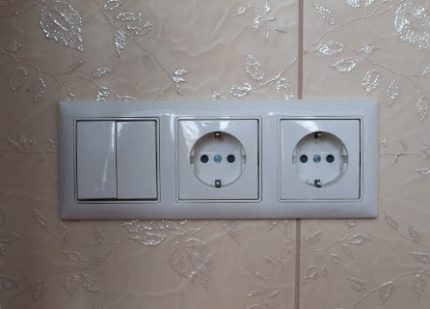
Option number 2. The second common use of a two-key switch is chandelier control.The design of the lighting device makes it possible to connect the bulbs to two different keys, due to which the light level is adjusted.
If one key controls 2 light bulbs, and the second - 4, then you can use three lighting modes: muted (2), light (4) and intense (6).
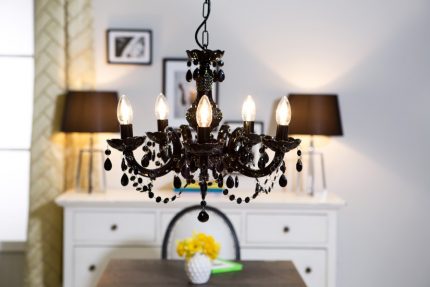
A large number of modern chandeliers, especially with LEDs, are controlled from a remote control. Especially advanced in this direction are multi-colored multi-mode Chinese models. But the option with the switch is still more reliable - the remote control may fail, and electromechanics rarely fail.
With the DV, you can control not only one, but also two lighting devices (or groups) installed in one room. For example, if you connect a chandelier and a pair of sconces to different keys.
So, the functions of the two keys are very useful:
- control of multiple light sources;
- Segment control of one, but multi-track device (chandelier);
- the ability to adjust the degree of illumination in the room;
- saving mounting elements.
If you appreciated the capabilities of the two-key model and want to replace the old one-key with it, you will have to change the connection scheme and, most likely, you need to start with the wiring.
Connection schemes for dual models
Before starting the installation, it is necessary to divide the spotlights or lamps of the chandelier, which are planned to be connected to one DV, into two groups. To create different lighting modes, they must be unequal (for example, 2 + 6 or 1 + 2).
It is impossible to connect more than two groups to one two-keyboard, for this purpose a three-keyboard switch or separate electromechanical devices are used.
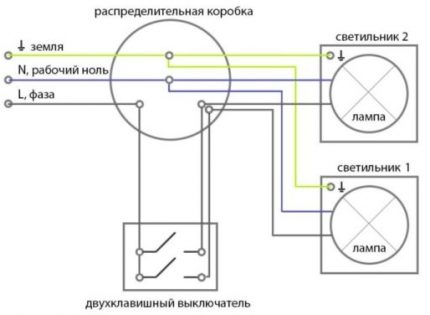
The obligatory elements of any DV connection scheme include the electrical device itself, the junction box and circuit breaker, which is installed on the switchboard.
Also required new wiresif the old ones do not meet modern standards - in the houses built in the middle of the 20th century, aluminum wiring remained.
One of the differences in wiring diagrams relates to grounding systems. Old houses use the outdated TN-C system.
Its difference is that the ground and ground conductors are connected in one PEN wire, so only two wires pass from the machine to the apartment instead of three. With the TN-C grounding system, the wiring diagram looks like this.
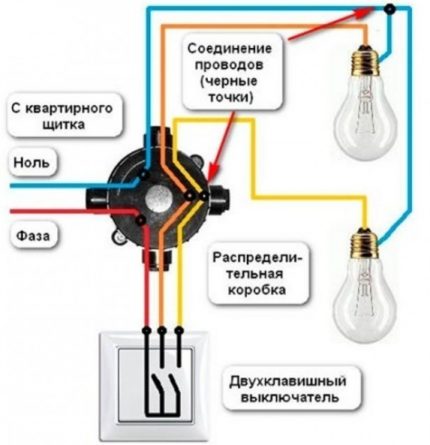
If you need to connect a chandelier with several horns in the conditions of the TN-C system, then the scheme is as follows.
However, the scheme changes fundamentally if you should not connect a chandelier, where all the lamps are concentrated in one place, but connect two bulbs. Each lighting fixture requires a separately laid wire.
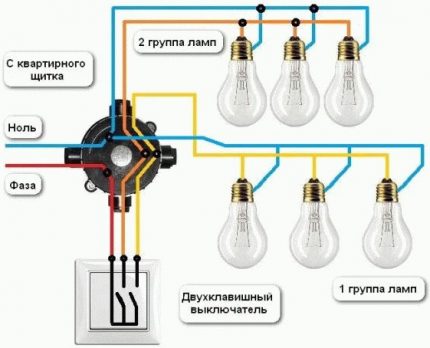
The modern TN-S grounding system does not require combining ground with zero, so three standard conductors are laid from the shield.
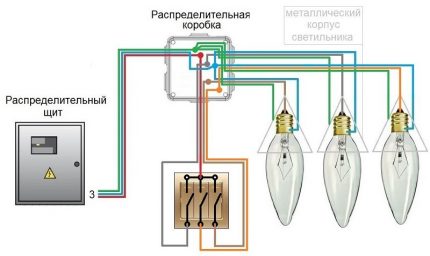
After ascertaining the type of the grounding system, it remains to choose a suitable circuit and transfer it to the circuit breaker installation drawing, while specifying the installation locations of all the devices involved.
When planning, remember that the installation height of electrical installations for private use according to PUE is from 0.8 m to 1.7 m, the distance to the gas pipe is not less than 0.6 m, to the door jamb - at least 0.15-0.20 m.
Step-by-step DV installation guide
Before starting work, you must repeat the safety rules, purchase all the necessary devices and wires, and also prepare a tool for mounting devices and connecting wires.
A wall chaser, a drill and a punch will be required if it becomes necessary to lay new wiring. Work gloves, protective clothing and goggles (mask) will not be superfluous in the process of performing "dirty" work.
Mounting the protective device in the electrical panel
There is a possibility that a separate machine for one lighting group is already installed on the panel. But this is only possible if the house is new or recently undergone major repairs. Previously, it was not customary to integrate rosette and lighting groups into separate circuits.
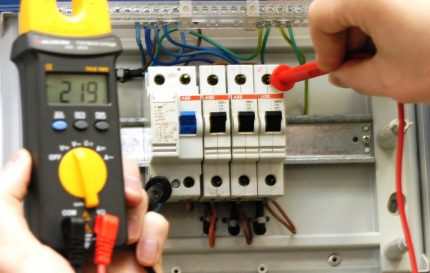
Highly recommended for work on machine installation call a qualified electrician, as independent manipulations with protective equipment in the shield are prohibited.
All work, further related to wiring, must be started precisely from the apartment-wide electric switchboard or cabinet, in particular, by turning off the machine of the circuit of interest (in our case, the lighting).
Wiring options: hidden and outdoor
In urban apartments and modern cottages, hidden wiring is used, as it gives more room for decoration, moreover, it is safely masked behind a layer of insulation in the wall.
In wooden houses they sell open type of wiring, because laying the wires inside the logs is complicated and costly - each cable must be placed inside a metal pipe.
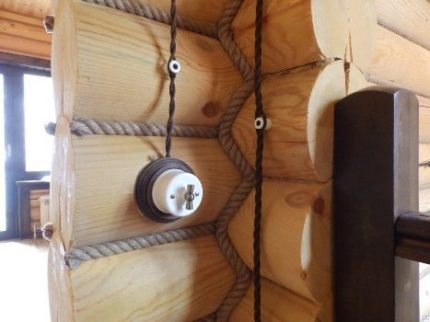
To organize the power grid in an ordinary apartment, you must in wall grooves in all junction boxes, outlets and switches.
Strobes, according to the PUE, must pass strictly horizontally (at a height of at least 2 m from the floor) or vertically.
At the same stage install the junction box and the socket, fixing with plaster. Strobing is the longest, most laborious and difficult stage.
After it, cleaning is mandatory: it is necessary to take out the garbage, vacuum and mop the floor. Dust particles should not get into the switch box or inside the switch mechanism, that is, at the junction of the wires.
Connection of wires in the electrical box
The junction box is installed directly above the switch or in another place convenient for maintenance. It cannot be hidden under the cladding on the wall, as intervention may be required at any time.
The photo shows how to twist the wires. This is the easiest, but not the safest, method of connecting wires. Now there are more advanced methods, for example, using terminal blocks - convenient self-locking devices. Soldering and welding are extremely rare.
Switch connection and installation
For independent connection and installation of a two-gang switch, you will need screwdrivers, pliers, pliers, a knife, wire cutters, a level.
Hands should be protected with gloves for electrical work with a protective insulating layer. In addition, an indicator screwdriver or tester is useful.
It was a kind of preparatory stage. After stripping lived You can begin to connect the wires to the switch.
The models of switches and wires may be different, but the connection diagram remains the same. The connection in the distribution box can differ only by the addition of earth from the incoming power and the same grounding wires - from the lamps.
As you can see, there are a lot of works on installing the DV, and even if you just need to replace and reconnect the device, you can save money by doing everything yourself. Calling an electrician will cost from 200 to 500 rubles (the cost of only replacing the circuit breaker).
Safety Compliance
Electric shock can result in irreversible consequences, so before each procedure for installing a switch or socket, a number of simple rules should be observed:
- the first step should always be to turn off the power on the switchboard - to protect and install machines;
- it should become a habit to regularly check the voltage with the help of a tester or indicator;
- only serviceable tools with insulated handles and high-quality, unworn materials should be used;
- Clothing and shoes should be comfortable and not cause discomfort during work.
When working with a chipper, circular saw, chipper, hammer or drill, it is advisable to additionally use a protective mask and a respirator.
Outsiders must be prohibited from entering the work area. If children live in the apartment or there are animals, it is better to leave them in another room for a while under the supervision of adults or send them to visit.
Conclusions and useful video on the topic
From the video materials presented below, you can learn how to independently connect a two-gang light switch, how to correctly connect the wires and install electrical devices.
How to connect wires to terminals:
Installation of the double block "switch + socket":
How the chandelier is connected to the Far East
Living in a modern house is impossible without the use of electrical appliances and devices, so the skills of "communication" with electricity can come in handy at any time.
Having learned the theory and practiced a little at home, you can easily change the circuit breaker, install a power outlet, or split the home electrical network into several easy-to-maintain circuits.
Do you have any personal experience connecting a two-key switch? Want to share your knowledge or ask questions about the topic? Please leave comments and participate in discussions - the feedback form is located below.

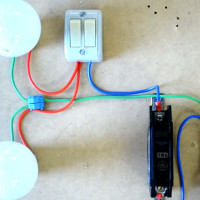 Wiring diagram for a two-gang switch for two bulbs: wiring features
Wiring diagram for a two-gang switch for two bulbs: wiring features 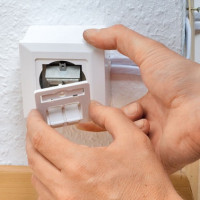 How to connect an Internet outlet: a step-by-step installation guide
How to connect an Internet outlet: a step-by-step installation guide 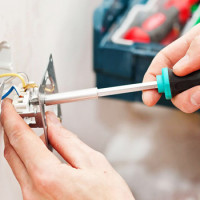 How to install and connect an outlet: a step-by-step guide
How to install and connect an outlet: a step-by-step guide 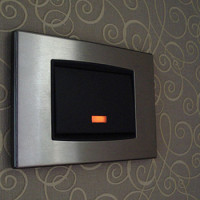 How to connect an LED switch: rules for connecting a backlit switch
How to connect an LED switch: rules for connecting a backlit switch 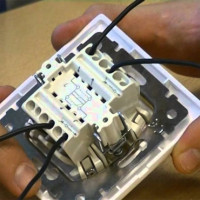 Connecting the passage switch from two and three places: analysis of circuits + installation instruction
Connecting the passage switch from two and three places: analysis of circuits + installation instruction 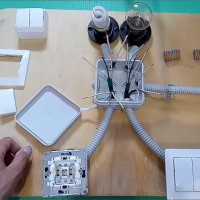 Two-way walk-through switch: device + wiring diagram + installation tips
Two-way walk-through switch: device + wiring diagram + installation tips  How much does it cost to connect gas to a private house: the price of organizing gas supply
How much does it cost to connect gas to a private house: the price of organizing gas supply  The best washing machines with dryer: model rating and customer tips
The best washing machines with dryer: model rating and customer tips  What is the color temperature of light and the nuances of choosing the temperature of the lamps to suit your needs
What is the color temperature of light and the nuances of choosing the temperature of the lamps to suit your needs  Replacement of a geyser in an apartment: replacement paperwork + basic norms and requirements
Replacement of a geyser in an apartment: replacement paperwork + basic norms and requirements
During cosmetic repairs at home, I connected all sockets and switches on my own. There is nothing complicated about this, you just need to watch some videos with manuals before work. But the main thing is to immediately turn off the electricity supply immediately before the start of electrical operations, because there were cases when people simply forgot about it. At the end of the installation, you need to securely fix everything.
Good day, Sergey. You will be surprised, but after a power outage, other measures are also planned, "proving" that there is really no voltage. The safety algorithm is regulated by the "Safety Rules ..." (attached screenshot of the points).
I remember a couple of accidents when the apartment owners, having turned off the machine on the floor shield, began to change the outlet and were shocked by the current. It turned out that the outlet during the construction of the house was powered from the neighboring apartment.